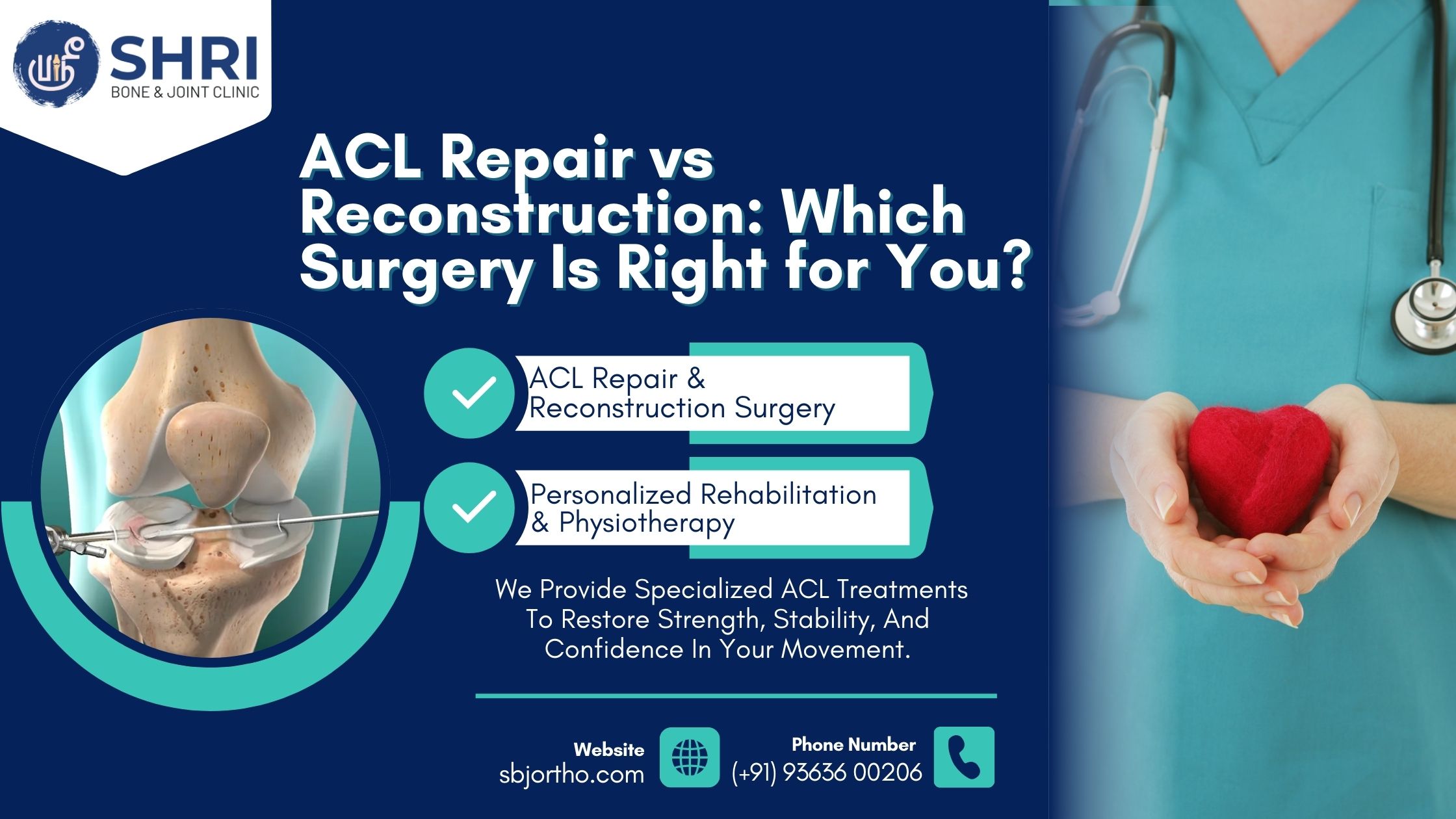An ACL (anterior cruciate ligament) tear is one of the most common knee injuries, particularly among athletes and active individuals. When it comes to surgical options, two main procedures are often discussed — ACL repair surgery and ACL reconstruction surgery. While both aim to restore knee stability and function, they differ significantly in approach, recovery, and long-term outcomes.
This article breaks down the differences between ACL repair and reconstruction to help you understand which option may be best suited for your condition.
What is ACL Repair Surgery?
ACL repair surgery involves reattaching the torn ligament back to the bone. It preserves the patient’s natural ligament instead of replacing it. Repair is generally considered when the ligament tears close to its attachment point (proximal tear) and retains good tissue quality.
Key Highlights:
- Minimally invasive arthroscopic procedure.
- Preserves the natural ligament.
- Suitable mainly for fresh or partial tears.
- Recovery can be faster compared to reconstruction.
What is ACL Reconstruction Surgery?
ACL reconstruction is the standard surgical treatment for most ACL tears. Instead of repairing the torn ligament, the surgeon replaces it with a graft, which can be taken from the patient’s hamstring or patellar tendon, or from donor tissue.
Key Highlights:
- Most common and reliable ACL surgery worldwide.
- Provides long-term knee stability.
- Effective for complete or complex tears.
- Longer recovery period compared to repair.
Key Differences Between ACL Repair and Reconstruction
| Aspect | ACL Repair Surgery | ACL Reconstruction Surgery |
| Procedure | Reattaches natural ligament | Replaces ligament with graft |
| Ideal Candidates | Fresh/proximal tears, younger patients | Complete or chronic tears |
| Recovery Time | Typically shorter | 6–9 months for full recovery |
| Long-Term Results | Less predictable, risk of re-tear | Proven long-term success |
| Popularity | Less common | Gold standard treatment worldwide |
Factors That Determine the Right Choice
The decision between ACL repair and reconstruction depends on:
- Location of tear: Proximal tears may be suitable for repair, while mid-substance tears usually require reconstruction.
- Age and activity level: Younger athletes and active adults often benefit more from reconstruction for long-term stability.
- Tissue quality: Strong, healthy ligament tissue may support repair, but weak or damaged tissue requires reconstruction.
- Surgeon’s expertise: Not all surgeons recommend repair due to its limited long-term success compared to reconstruction.
Recovery Expectations
- ACL Repair Surgery: Recovery can be faster, with patients often resuming normal activities in 4–6 months, depending on physiotherapy progress. However, there is a slightly higher risk of re-injury.
- ACL Reconstruction Surgery: Full recovery, especially for sports activities, generally takes 6–9 months. With proper rehabilitation, reconstruction offers stronger long-term stability.
Frequently Asked Questions
Which surgery is more common for ACL injuries?
Most patients undergo ACL Reconstruction Surgery, as it provides predictable, long-term results for complete ligament tears.
Can ACL repair surgery be done for a rupture?
In some cases of proximal rupture, ACL Rupture Treatment may involve repair, but reconstruction is usually the more reliable option.
Is reconstruction always necessary for ligament tears?
Not always. Some patients with partial injuries may benefit from ACL Ligament Tear Treatment or conservative management before considering surgery.
Does arthroscopy play a role in both procedures?
Yes. Both repair and reconstruction can be performed using minimally invasive techniques such as Arthroscopic ACL Reconstruction Surgery, which ensures faster healing and reduced complications.
Which option is better for athletes?
For athletes who demand high knee stability, ACL Reconstruction Surgery is usually recommended, as it provides durable and consistent results.

